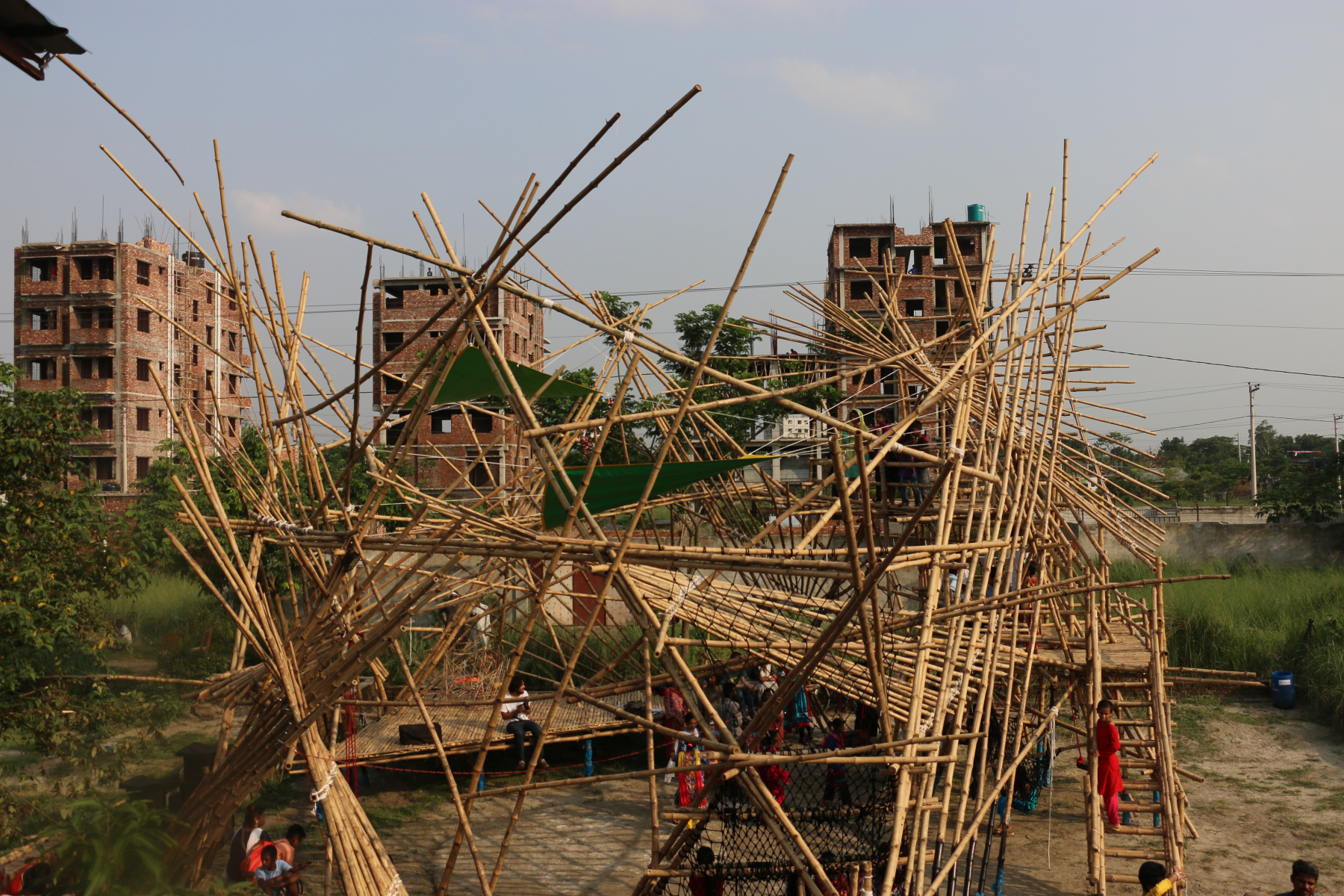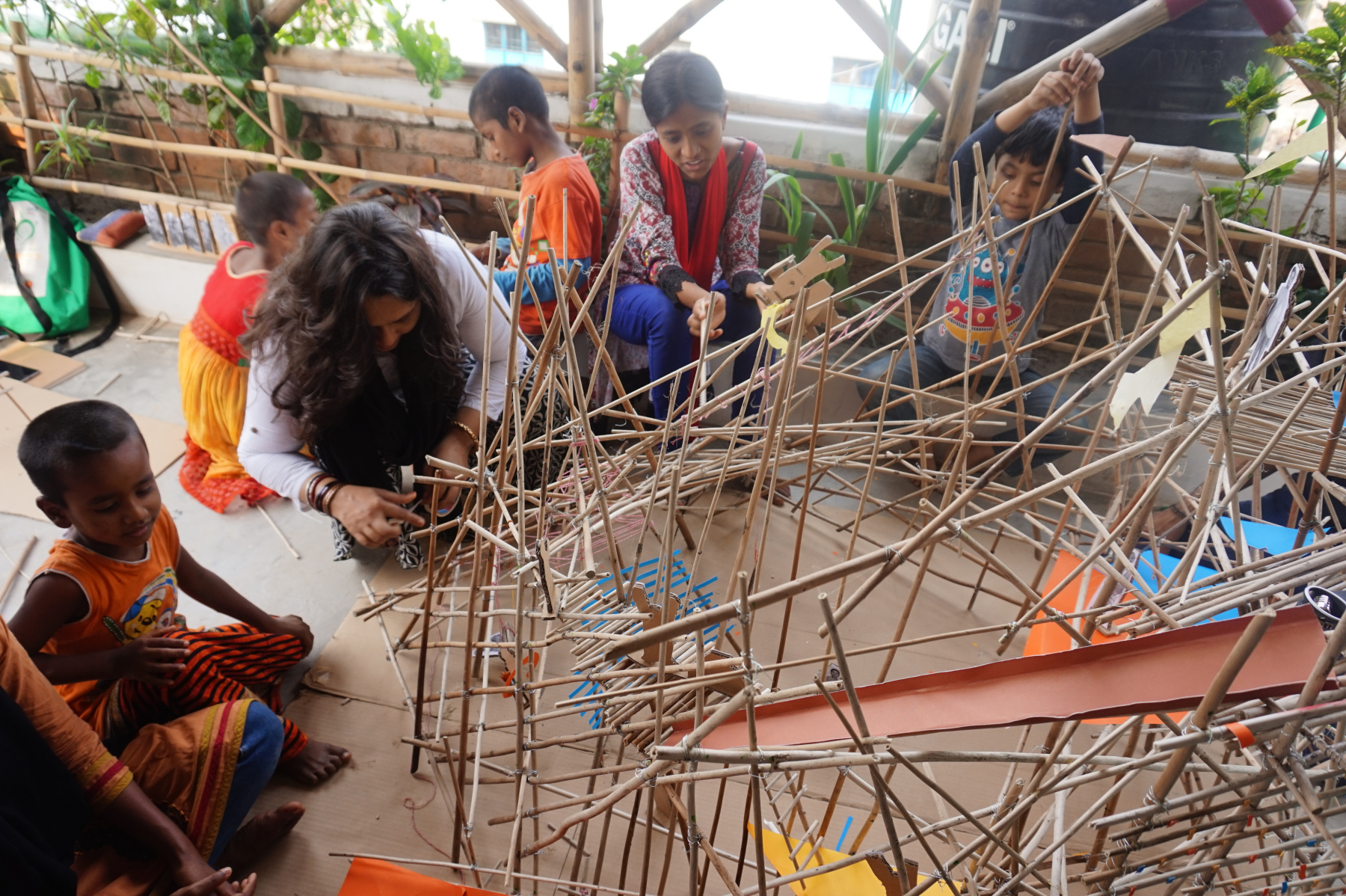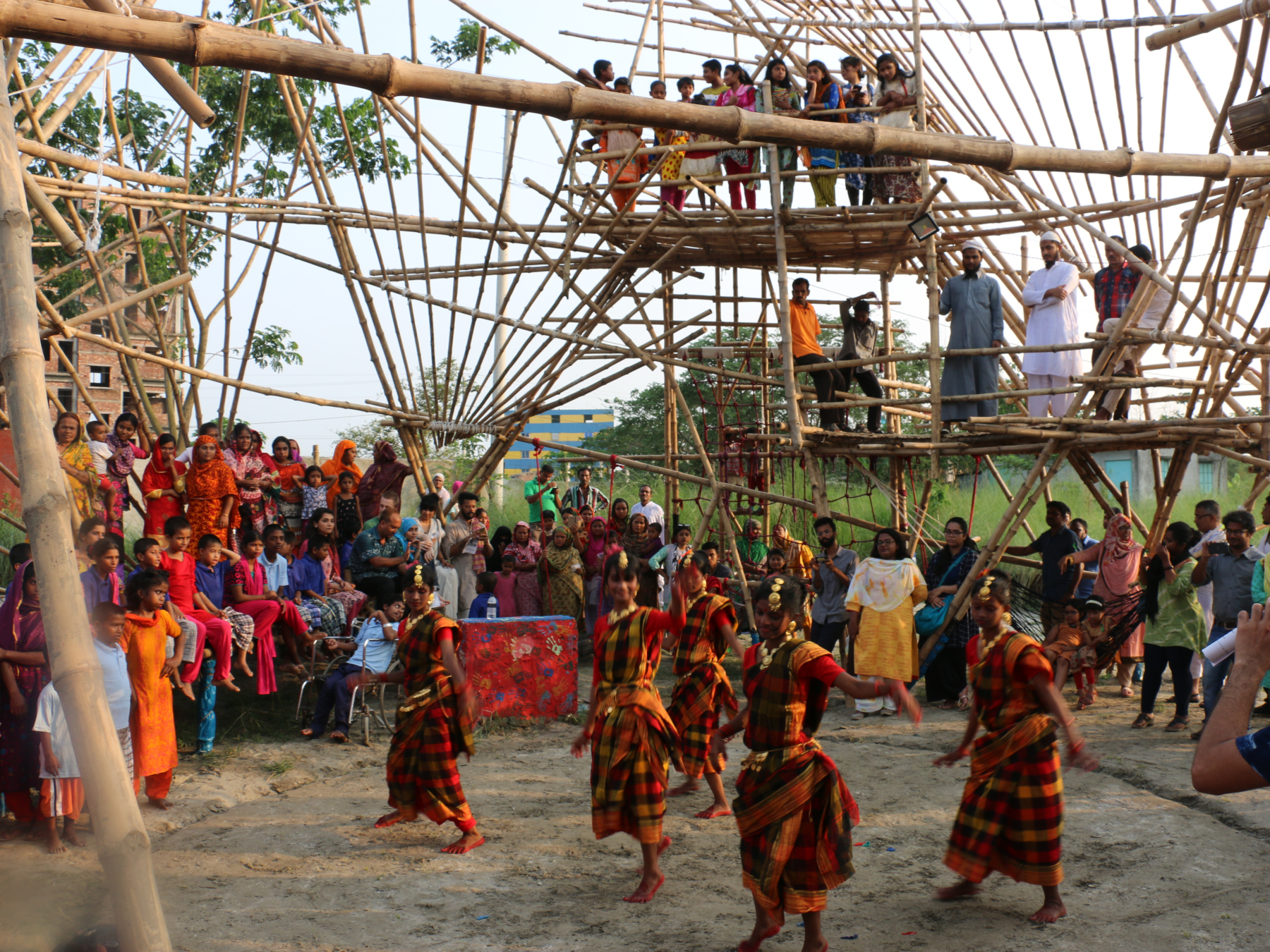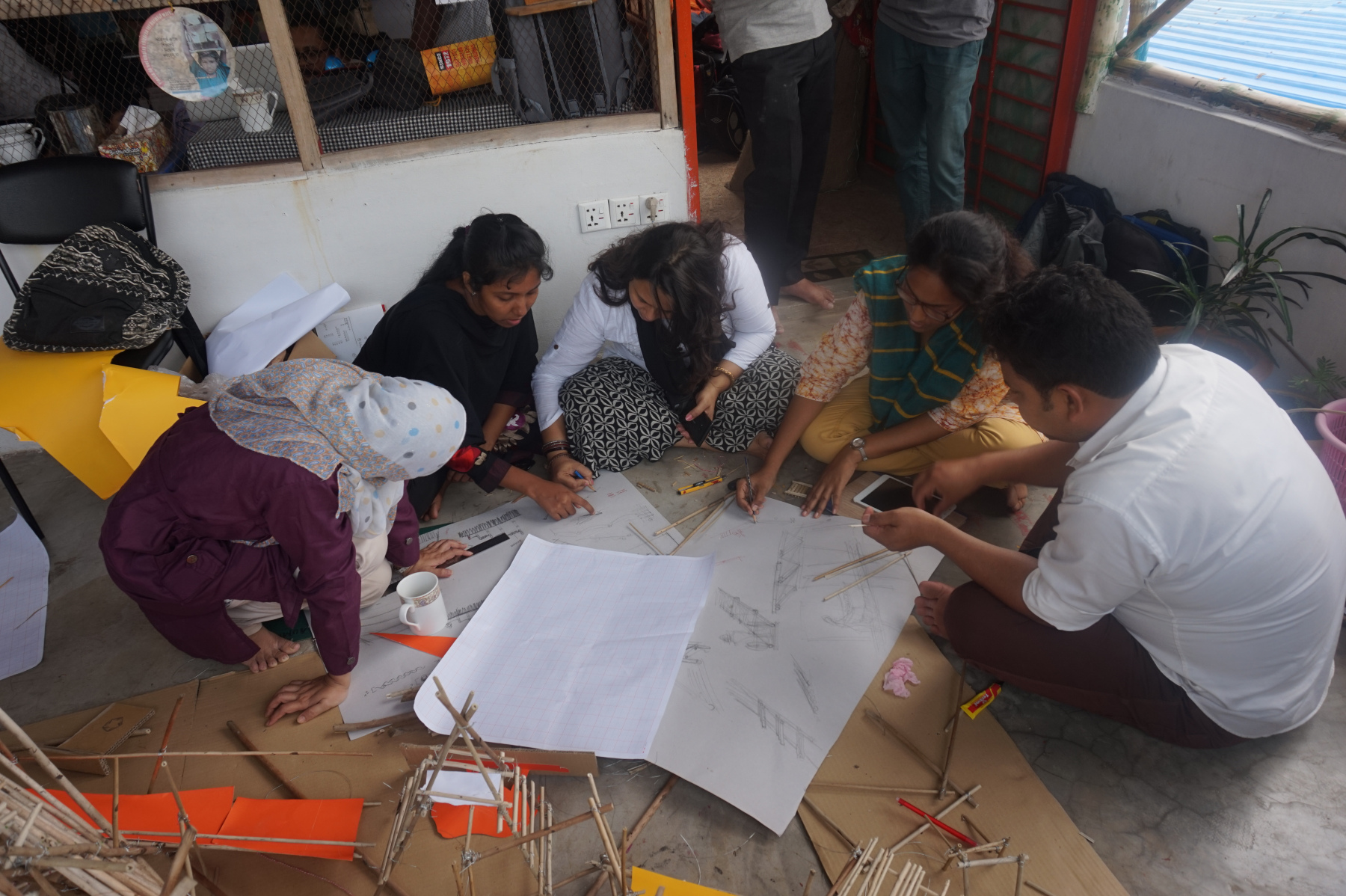In retrospect on the Bamboo Design Workshop coordinated with Paraa.
Limited amount of land area and exorbitant prices have not only lead to the encroachment of this city’s water bodies and agricultural lands by builders, but also caused the peri – urban areas, previously agricultural fields, to undergo land filling so that they may be developed into areas for ‘new housing.’ The case of a recently developing land area, Washpur Garden City in Bosila, within Keraniganj Upazilla is no different. Land are here has also been divided up into 3 – 5 katha plot sizes and sold off effortlessly under the name of ‘green housing and high livability standards.’ However among the many insufficiencies, an alarming one, revealed through conversation with a present landowner, is that only 5 katha of land area has been allocated for community play by the housing authorities. Buyers and builders have little to complain nevertheless, not realizing what is at a loss here.
Out of the many plots within this housing, one is owned by LEEDO – a local charity that works to support a number of underprivileged floating children through education, health and their basic needs. Paraa – a multidisciplinary design and architectural studio focusing on enhancing spaces with the communities, has been working with LEEDO since 2013. It seeks to understand the role of designers in projects that work with and for the vulnerable urban children of Dhaka. Through previous collaborations, indebt study of the children’s lifestyle and the direction of Washpur Garden City’s upcoming development, we at Paraa recognized this neighborhood’s crucial need for a space of reflection, for children’s play and one which allows a scope for investigation on models of urban landscape.
Grounded on these thoughts the ‘Bamboo Design Build Workshop’ was launched on April 2017 with support from Ghorami.Jon, HBRI Bangladesh and others. This workshop was launched after the particular success of a previous attempt by Paraa, where the design of a ‘Play Garden’ for the underprivileged urban children of the LEEDO Peace Home was worked on with the focus to generate awareness on models of urban agriculture and the importance of play for growing children. This workshop comprehended on the previous understandings, and sought to explore ways to meet the UN Sustainability goals, methods of participatory design – its importance and impact and methods of rethinking institutionalized design processes.


The Play Space intended for use by the children of the LEEDO Peace Home, along with the people of the local neighborhood and of Dhaka, provides a precedent for understanding the role of architects in civic or public space creation, and especially, working with a user group to design the place in a participatory manner. Although this project is temporary ( up to 2 years) it is intended to provide a much needed amenity – a space to play, to relax, to sit, to enjoy performances and beyond. At the scale the project has been delivered, it is intended to inspire young architects intending to push forward some of the boundaries of what is possible. At the same time, this space now open to public, is simply a new play space for the many vulnerable children of LEEDO Peace Home.

Hasan: “I’m very much pleased with the stage! And the swings are awesome!”
Rubel: “I liked the hammock very much! I’m going to use the swings a lot.”
Russel: “I’m very pleased! It was a barren field and we couldn’t play. Now we can play at this playground. Building this playground has been fantastic for us.”
Nizam: “I’m delighted with this spacious playground. Hopefully we can explore the space for our entertainment. We’ll manage the playground.”

Regarding the involvement of the children in feedback and also the design development processes: This is always going to be the most difficult design challenge, and perhaps, not enough was done. So, although there was plenty of engaged workshops and friendships developed, there could have been better workshop designs. A key note here and the importance for Paraa in this process was to show that it is not so easy to quickly get the information (the user is not just a data source) but to develop meaningful interactions and participation if possible.

Regarding the wider engagement with the local community: Although we intended to engage with the local public, the time and resources did not allow for such an activity. However, on the opening day, the public came, enjoyed the space immensely and gave us positive feedback throughout the construction phase. They were intrigued, and we imagine, will make full use of the space too.
A link to the construction process
https://vimeo.com/218438057
Source: Farasha Zaman Blog
